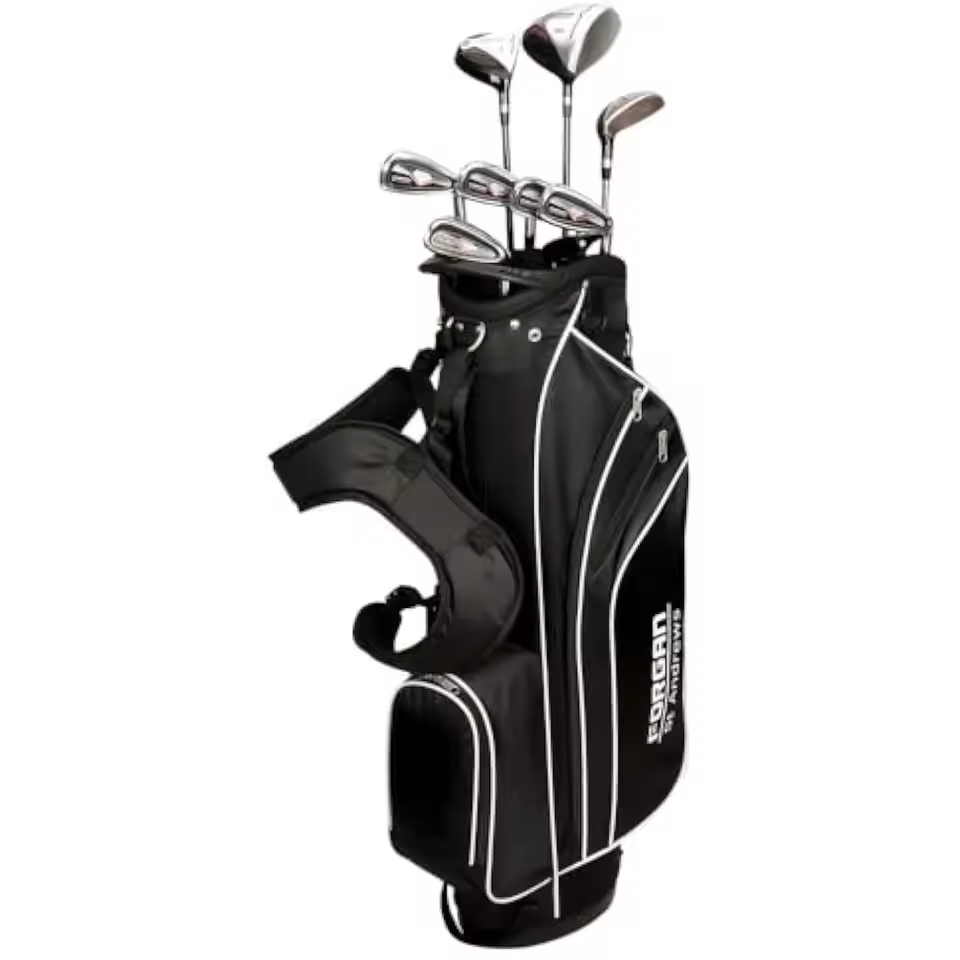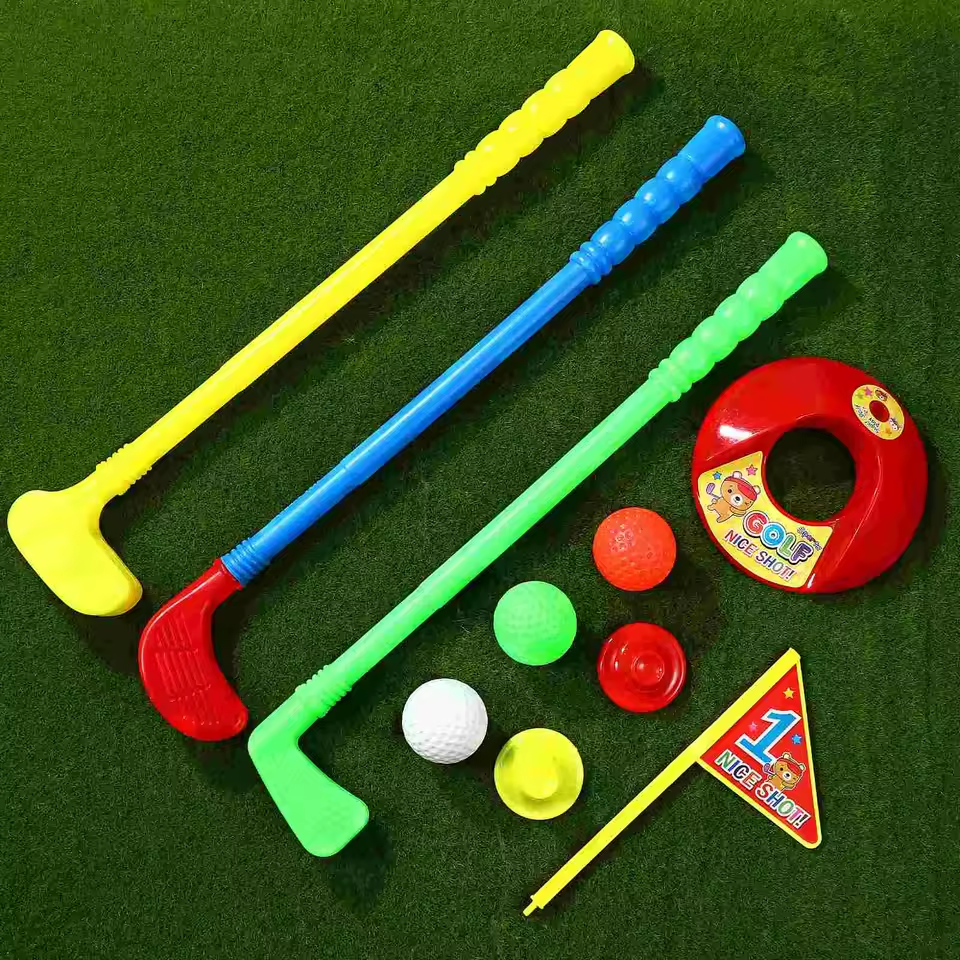Introduction to the Golf Player
A golf player is anyone who engages in the sport of golf, whether as a hobbyist, amateur, or professional. From the greens of Augusta National to local driving ranges, golf players of all skill levels seek to refine their technique, master club selection, and enjoy the game’s strategic challenges. However, many golf players face common hurdles, such as inconsistent swings, equipment confusion, or mental pressure during play. This guide is tailored to address these issues, offering actionable advice for both beginners and seasoned players. By the end, you’ll have a comprehensive roadmap to enhance your performance and confidence on the course.
Key Challenges Faced by Golf Players
- Swing Consistency: Many golf players struggle to replicate the same swing motion, leading to erratic ball trajectories.
- Equipment Selection: Choosing the right clubs, balls, and accessories can overwhelm new golf players, affecting their game.
- Mental Pressure: High-stakes tournaments or casual rounds with friends can create stress for golf players, impacting focus.
- Course Strategy: Deciding when to use a driver, iron, or wedge requires understanding the layout and conditions.
- Fitness and Endurance: Physical conditioning is often overlooked, yet it’s crucial for long-term performance as a golf player.
By addressing these challenges, golf players can unlock their full potential and enjoy the game more fully.
Essential Equipment for Every Golf Player
- Clubs:
- Driver: For long-distance tee shots.
- Irons: Used for mid-range shots and approach shots.
- Wedges: For short, high-lofted shots around the green.
- Putter: Critical for sinking putts on the green.
- Hybrid Clubs: A modern alternative to long irons for easier hitting.
- Golf Balls:
- Two-Piece Balls: Ideal for beginners due to durability and distance.
- Three-Piece Balls: Offer spin control for advanced golf players.
- Golf Bags and Carts:
- Carry Bags: Lightweight and portable for walking courses.
- Push Carts or Electric Carts: Enhance comfort during long rounds.
- Golf Apparel:
- Moisture-wicking clothing and spiked shoes improve performance and stability.
- Accessories:
- Gloves, tees, and rangefinders complement a golf player’s gear.
Investing in quality equipment ensures a golf player performs at their best.
How to Improve Your Swing as a Golf Player
- Posture and Stance:
- Stand with feet shoulder-width apart and bend your knees slightly.
- Keep your back straight and head over the ball for optimal alignment.
- Grip Technique:
- Overlapping, interlocking, or cross-handed grips suit different hand sizes and styles.
- Backswing and Downswing:
- A smooth, controlled backswing builds power without strain.
- The downswing should be explosive yet fluid, maintaining balance.
- Follow-Through:
- A proper follow-through ensures energy transfer to the ball.
- Finish with your chest facing the target for consistency.
- Practice Drills:
- Chipping nets, putting mats, and driving range sessions refine technique.
Mastering the swing is the foundation for every golf player.
Strategies for Beginner Golf Players
- Start with the Basics:
- Focus on putting and chipping before mastering full swings.
- Practice short-game skills to reduce strokes on the course.
- Take Lessons:
- Professional instructors identify flaws in a golf player’s form.
- Regular coaching accelerates progress.
- Use Simulators:
- Indoor simulators provide feedback on ball flight and distance.
- Ideal for practicing in adverse weather.
- Play with Experienced Golf Players:
- Observing seasoned players improves decision-making and etiquette.
- Track Progress:
- Use apps or scorecards to monitor improvements over time.
Beginners benefit from structured learning and patience.
Advanced Techniques for Professional Golf Players
- Custom Club Fitting:
- Tailored clubs optimize performance for a professional golf player’s swing speed and style.
- Mental Training:
- Visualization and breathing exercises reduce pressure during tournaments.
- Data Analysis:
- Launch monitors track ball speed, spin, and trajectory for fine-tuning.
- Fitness Routines:
- Strength training and flexibility exercises prevent injuries and boost power.
- Course Management:
- Study hole layouts and adjust strategies based on wind and hazards.
Professionals leverage technology and discipline to stay competitive.
Choosing the Right Golf Player Gear
- Club Selection:
- Match clubs to your skill level (e.g., graphite shafts for power, steel for control).
- Golf Balls:
- Beginners may prefer two-piece balls; professionals opt for three-piece for spin.
- Footwear:
- Spiked shoes provide stability, while spikeless options suit soft turf.
- Clothing:
- Breathable, stretchy fabrics allow for a full range of motion.
- Accessories:
- A quality rangefinder or GPS watch aids in distance management.
The right gear elevates a golf player’s performance and comfort.
Common Mistakes to Avoid as a Golf Player
- Over-Gripping: Excessive tension reduces swing speed and accuracy.
- Ignoring Alignment: Misaligned feet or shoulders lead to hooks or slices.
- Poor Ball Positioning: Adjust ball placement based on the club used (e.g., forward for drivers, centered for irons).
- Rushing Shots: Take time to assess each shot for better outcomes.
- Neglecting Warm-Ups: Cold muscles increase injury risk and reduce consistency.
Avoiding these errors helps golf players avoid frustration and improve results.
How to Build a Golf Player’s Mental Game
- Stay Positive: Focus on progress, not perfection, to maintain confidence.
- Set Realistic Goals: Break down objectives into manageable targets.
- Practice Visualization: Mentally rehearse successful shots to boost performance.
- Manage Pressure: Use breathing techniques or short breaks to stay calm.
- Learn from Mistakes: Analyze errors to avoid repeating them.
A strong mental game separates average golf players from champions.
The Role of Fitness in a Golf Player’s Performance
- Strength Training:
- Core and leg strength improve stability and power.
- Flexibility:
- Stretching routines enhance swing range and reduce stiffness.
- Endurance:
- Walking 18 holes requires stamina; cardio workouts help.
- Balance:
- Exercises like yoga or Pilates refine body control during swings.
- Nutrition:
- Hydration and balanced meals sustain energy levels during long rounds.
Fitness is a cornerstone of a golf player’s success.
How to Choose the Best Golf Player Equipment
- Clubs:
- Get fitted for clubs that match your swing speed and height.
- Balls:
- Test different brands to find one that suits your playing style.
- Bags:
- Choose a bag with adequate pockets and weight distribution.
- Apparel:
- Opt for brands like Nike or Titleist that prioritize performance.
- Budget Considerations:
- Prioritize essential items (e.g., irons) over luxury accessories.
Smart equipment choices ensure a golf player maximizes efficiency and enjoyment.
The Importance of Practice for a Golf Player
- Consistent Routine:
- Dedicate 2–3 hours weekly to practice fundamentals.
- Targeted Drills:
- Focus on weak areas, such as putting or driving accuracy.
- Use Technology:
- Launch monitors and swing analyzers provide instant feedback.
- Play Regularly:
- Applying skills on the course reinforces learning.
- Join Golf Communities:
- Local clubs or online forums offer peer support and tips.
Regular practice transforms a golf player into a skilled competitor.
How to Handle Pressure as a Golf Player
- Pre-Shot Routine:
- A consistent routine builds confidence and focus.
- Stay Present:
- Avoid dwelling on past mistakes or future shots.
- Use Positive Affirmations:
- Repeating mantras like “Stay relaxed” keeps the mind calm.
- Break Tournaments into Rounds:
- Focus on one hole at a time to reduce overwhelm.
- Embrace the Process:
- Enjoy the game rather than fixating on outcomes.
Pressure management is key for golf players in competitive settings.
The Future of Golf Player Technology
- Smart Golf Balls:
- Track trajectory, spin, and distance for instant analysis.
- AI-Powered Coaches:
- Apps like GolfLogix provide real-time course insights.
- Wearable Tech:
- Sensors in gloves or shoes monitor grip pressure and footwork.
- Virtual Reality (VR):
- Simulate courses for immersive practice sessions.
- Customizable Clubs:
- Adjustable lofts and weights adapt to a golf player’s preferences.
Technology empowers golf players to refine their skills.
How to Analyze a Golf Player’s Performance
- Track Statistics:
- Monitor driving distance, putting accuracy, and fairway hits.
- Video Analysis:
- Record swings to identify mechanical flaws.
- Seek Feedback:
- Work with coaches or peers to gain insights.
- Compare to Professionals:
- Study top golf players for inspiration.
- Adjust Based on Data:
- Use analytics to refine technique and equipment choices.
Performance analysis helps golf players pinpoint growth areas.
The Role of Nutrition for a Golf Player
- Hydration:
- Dehydration impairs focus and physical performance.
- Balanced Meals:
- Carbs for energy, proteins for recovery, and fats for endurance.
- Pre-Round Snacks:
- Energy bars or bananas provide quick fuel.
- Avoid Heavy Meals:
- Light meals prevent sluggishness during play.
- Electrolyte Balance:
- Sports drinks replenish minerals lost through sweat.
Nutrition supports a golf player’s physical and mental readiness.
Golf Player Etiquette and Course Rules
- Respect the Pace of Play:
- Avoid delays and keep up with the group ahead.
- Repair Divots and Ball Marks:
- Maintain the course for fellow golf players.
- Quiet on the Green:
- Refrain from loud chatter during putts.
- Dress Code Compliance:
- Follow course-specific attire rules (e.g., no jeans on certain courses).
- Rattle-Free Gear:
- Secure clubs and bags to prevent noise during others’ shots.
Etiquette ensures a golf player contributes to a respectful environment.
The Impact of Environment on a Golf Player
- Weather Adaptation:
- Rain, wind, or heat require adjustments in technique.
- Course Conditions:
- Soft or firm greens influence putting and chipping strategies.
- Lighting:
- Morning or evening play demands visual adjustments.
- Turf Type:
- Bermuda vs. bentgrass greens affect ball roll and spin.
- Elevation Changes:
- Uphill or downhill shots require power and precision.
Adapting to the environment is a hallmark of skilled golf players.
Conclusion: Becoming the Best Golf Player You Can Be
Whether you’re a beginner golf player or a professional golf player, continuous learning and practice are essential. By refining your swing, mastering equipment selection, and embracing fitness and mental training, you’ll elevate your performance on the course. Remember, even legends like Jake Knapp Golf Age began with foundational skills and relentless dedication. Invest in your growth as a golf player, and let every round be a step toward mastery. Start applying these strategies today and experience the joy of progress in every stroke!